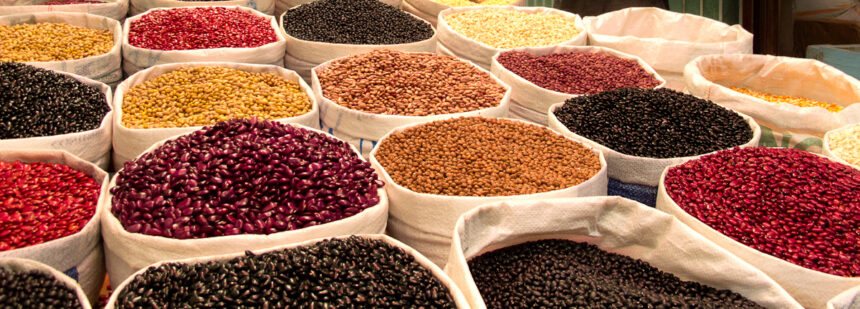PP woven bags have emerged as one of the most versatile and widely used packaging solutions across various industries. Their durability, flexibility, and cost-effectiveness make them ideal for a range of applications, from agricultural packaging to industrial use. Understanding the applications, production process, raw materials, and features of these bags provides valuable insight into why they have become a staple in the global packaging industry.
Applications of PP Woven Bags
PP woven bags are extensively used across different sectors due to their strength and versatility. In the agricultural industry, they are commonly employed for packaging grains, seeds, and fertilizers. The bags provide excellent protection against moisture, which is crucial for maintaining the quality of agricultural products during storage and transportation.
In the construction industry, PP woven bags are used to carry materials like cement, sand, and other building materials. Their ability to withstand heavy loads and rough handling makes them an ideal choice for such purposes. Moreover, these bags are often used for flood control, filled with sand to create barriers that prevent water from breaching into sensitive areas.
The food industry also benefits from PP woven bags, particularly in the packaging of rice, flour, and other bulk products. The bags are designed to be food-safe, ensuring that the contents remain uncontaminated. Additionally, their customizable printing options allow for branding, which is essential for market differentiation in the competitive food sector.
Retail businesses utilize PP woven bags as shopping bags, owing to their durability and eco-friendliness compared to traditional plastic bags. These bags are reusable and can be printed with vibrant designs, making them popular among consumers who are conscious of both environmental impact and aesthetics.
Finally, industrial sectors such as chemicals, textiles, and feed production frequently use PP woven bags due to their resistance to chemicals and their ability to handle large volumes of materials without tearing or degrading. The bags can be tailored to specific needs, such as including valve options for easy filling and dispensing.
Production Process of PP Woven Bags
The manufacturing process of PP woven bags is intricate and involves several stages, each critical in ensuring the quality and durability of the final product. At VidePak, the process begins with the selection of high-quality raw materials, which is a cornerstone of our commitment to delivering top-tier packaging solutions.
- Raw Material Selection and Preparation:
The primary raw material used in the production of PP woven bags is polypropylene (PP). VidePak exclusively uses new PP granules, ensuring that the bags produced are of the highest quality. Polypropylene is chosen for its lightweight, high strength, and resistance to chemicals and moisture. The raw material is mixed with other additives, such as UV stabilizers, to enhance the bags’ resistance to environmental factors. - Extrusion:
The mixed polypropylene is then melted and extruded into thin, flat tapes or fibers through a process known as extrusion. This step involves forcing the molten material through a die to create long tapes that are then cooled and stretched to align the polymer chains, increasing their strength and durability. - Weaving:
Once the tapes are produced, they are woven together using circular looms to create the woven fabric. At VidePak, we operate 150 circular looms, which allows us to produce a high volume of woven fabric efficiently. The weaving process is crucial as it determines the structural integrity of the bags, ensuring they can withstand the rigors of handling and transportation. - Lamination (Optional):
Depending on the application, the woven fabric may be laminated with a layer of polypropylene film. This lamination adds an additional layer of protection against moisture and enhances the bag’s printability. VidePak uses 32 lamination machines to apply this layer uniformly, ensuring that each bag meets the required specifications. - Cutting and Printing:
The woven fabric is then cut into the desired size for the bags. After cutting, the fabric can be printed with custom designs, logos, and text. VidePak utilizes 16 printing machines capable of producing multi-color prints with high precision, allowing for vibrant and durable designs that can withstand the wear and tear of everyday use. - Bag Formation and Sewing:
The cut and printed fabric is then folded and sewn into the final bag shape. This step may also include adding special features such as gussets, handles, or valves, depending on the customer’s requirements. The sewing process is crucial for ensuring the bags are durable and can carry the specified load without failure. - Quality Control and Packaging:
Before the bags are packaged for shipment, they undergo a rigorous quality control process. This includes checking the strength, size, and print quality of each bag. At VidePak, we adhere to strict quality standards, ensuring that every bag leaving our facility meets the expectations of our customers.
Raw Materials Used in PP Woven Bags
The quality and performance of PP woven bags largely depend on the raw materials used in their production. Polypropylene is the primary material, chosen for its numerous advantages, including:
- High Strength-to-Weight Ratio: Polypropylene is strong yet lightweight, making it ideal for creating durable bags that are easy to handle and transport.
- Chemical Resistance: PP is resistant to many chemicals, making it suitable for packaging a wide range of products, including chemicals and fertilizers.
- Moisture Resistance: One of the key benefits of polypropylene is its ability to resist moisture, which is essential for protecting the contents of the bags from humidity and water damage.
- Environmental Stability: With the addition of UV stabilizers, PP woven bags can withstand prolonged exposure to sunlight without degrading, making them suitable for outdoor storage and use.
VidePak’s commitment to using only new polypropylene granules ensures that our woven bags maintain their structural integrity and performance over time. Additionally, by incorporating recyclable materials, we contribute to environmental sustainability, aligning with the growing demand for eco-friendly packaging solutions.
Key Features of PP Woven Bags
The widespread use of PP woven bags can be attributed to several key features that set them apart from other packaging materials:
- Durability: PP woven bags are known for their ability to withstand heavy loads and rough handling, making them ideal for a variety of industrial and agricultural applications.
- Customizability: These bags can be tailored to meet specific requirements, including size, color, printing, and additional features like handles or valves. This flexibility makes them suitable for a wide range of uses.
- Cost-Effectiveness: Despite their high strength and durability, PP woven bags are relatively inexpensive to produce, making them a cost-effective choice for bulk packaging needs.
- Reusability: Unlike single-use plastic bags, PP woven bags are designed for repeated use, which makes them an environmentally friendly option.
- Lightweight: The lightweight nature of PP woven bags reduces transportation costs and makes them easier to handle, especially in large quantities.
- Resistance to Environmental Factors: The bags are resistant to moisture, chemicals, and UV light, ensuring that they can protect their contents in a variety of conditions.
VidePak’s Expertise in PP Woven Bags Production
Founded in 2008, VidePak has established itself as a leader in the production of high-quality PP woven bags. With over 30 years of industry experience within our core team, we have developed a deep understanding of the market and the evolving needs of our customers.
Our manufacturing facility is equipped with state-of-the-art machinery from globally renowned supplier Starlinger. This includes 150 circular looms, 16 extrusion lines, 32 lamination machines, and 16 printing machines. Our investment in advanced technology enables us to maintain a high production capacity while ensuring consistent quality across all our products.
VidePak’s product range includes BOPP Woven Bags, Valve Bags, Kraft Paper Woven Bags, FFS Tubular Woven Bags, and Jumbo Woven Bags. Each product is designed to meet specific industry needs, and we offer extensive customization options to cater to the unique requirements of our clients. https://www.pp-wovenbags.com/
We pride ourselves on our commitment to quality. Our bags are produced using 100% new PP material, and we adhere to rigorous quality control standards to ensure that each product meets the highest standards of performance and durability. Additionally, our bags are certified to meet various international standards, further demonstrating our dedication to excellence.
With a strong presence in major markets such as China, North America, Europe, the Middle East, Southeast Asia, South America, and Africa, VidePak has become a trusted partner for businesses worldwide. Our annual sales reach $80 million, a testament to the trust our customers place in our products and services.
At VidePak, we understand that quality and reliability are paramount. Our goal is to continue leading the industry by providing innovative and sustainable packaging solutions that meet the needs of our global customers. Whether you require standard products or custom-designed packaging solutions, VidePak is equipped to deliver excellence in every bag we produce.


